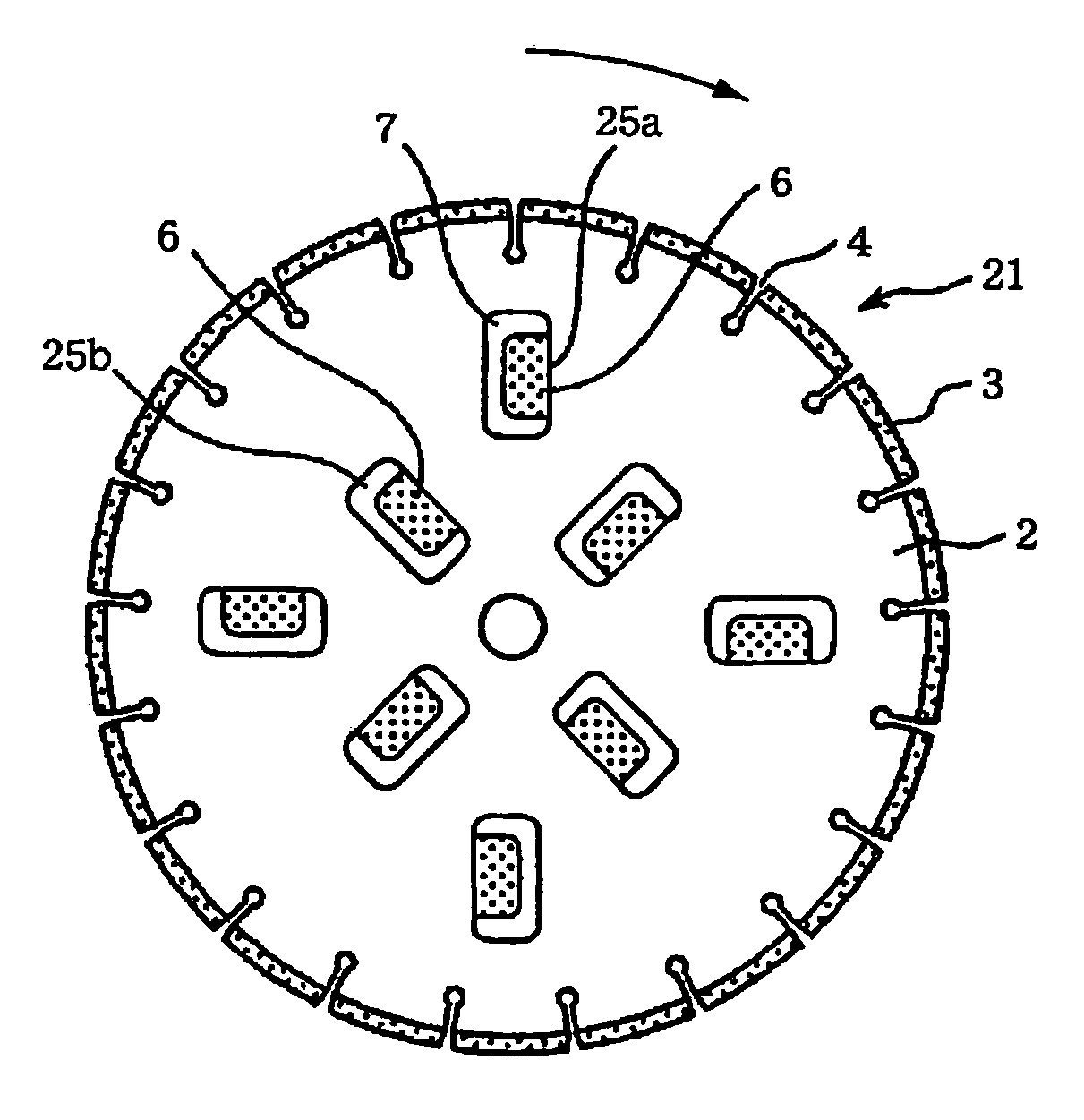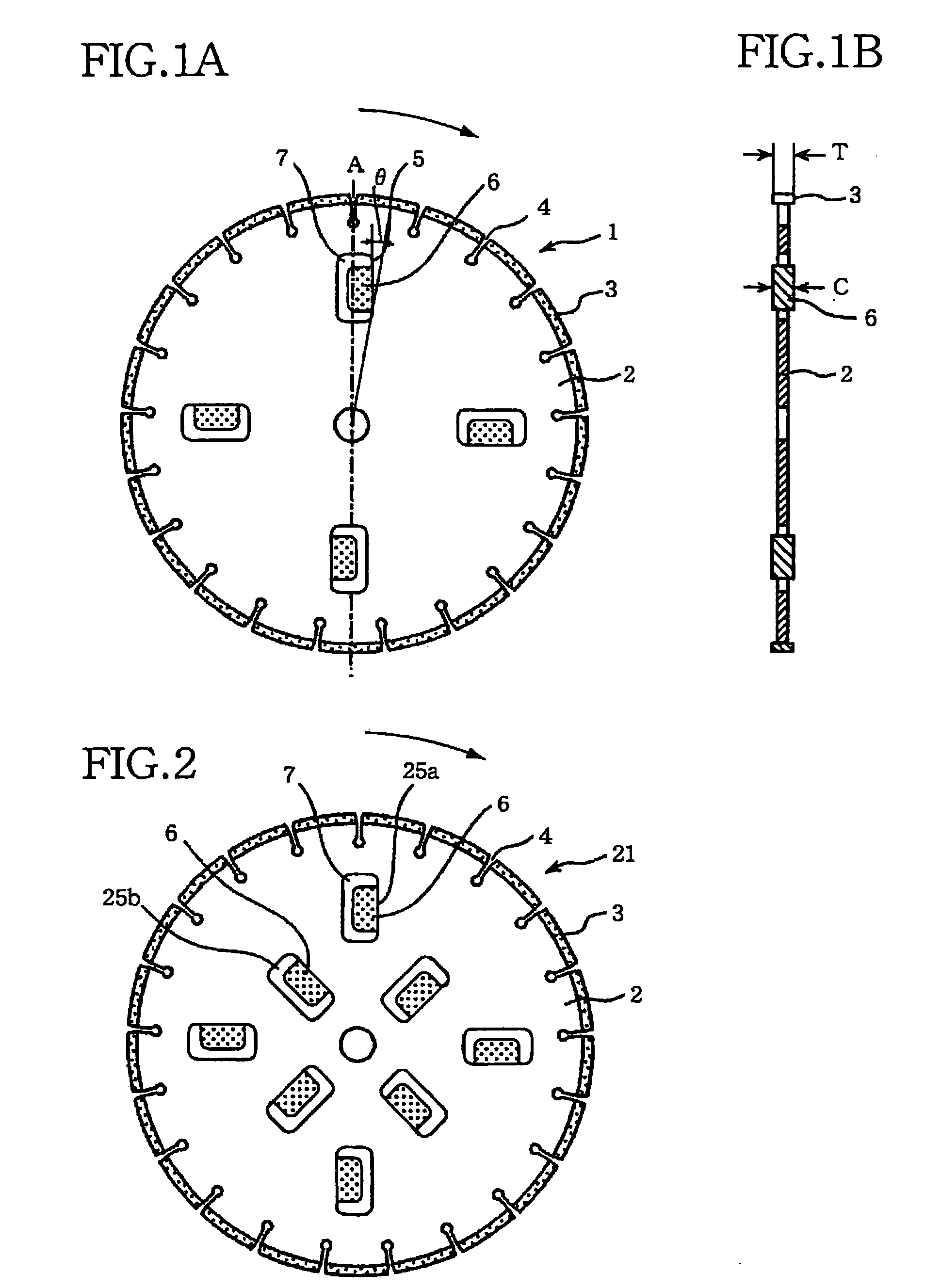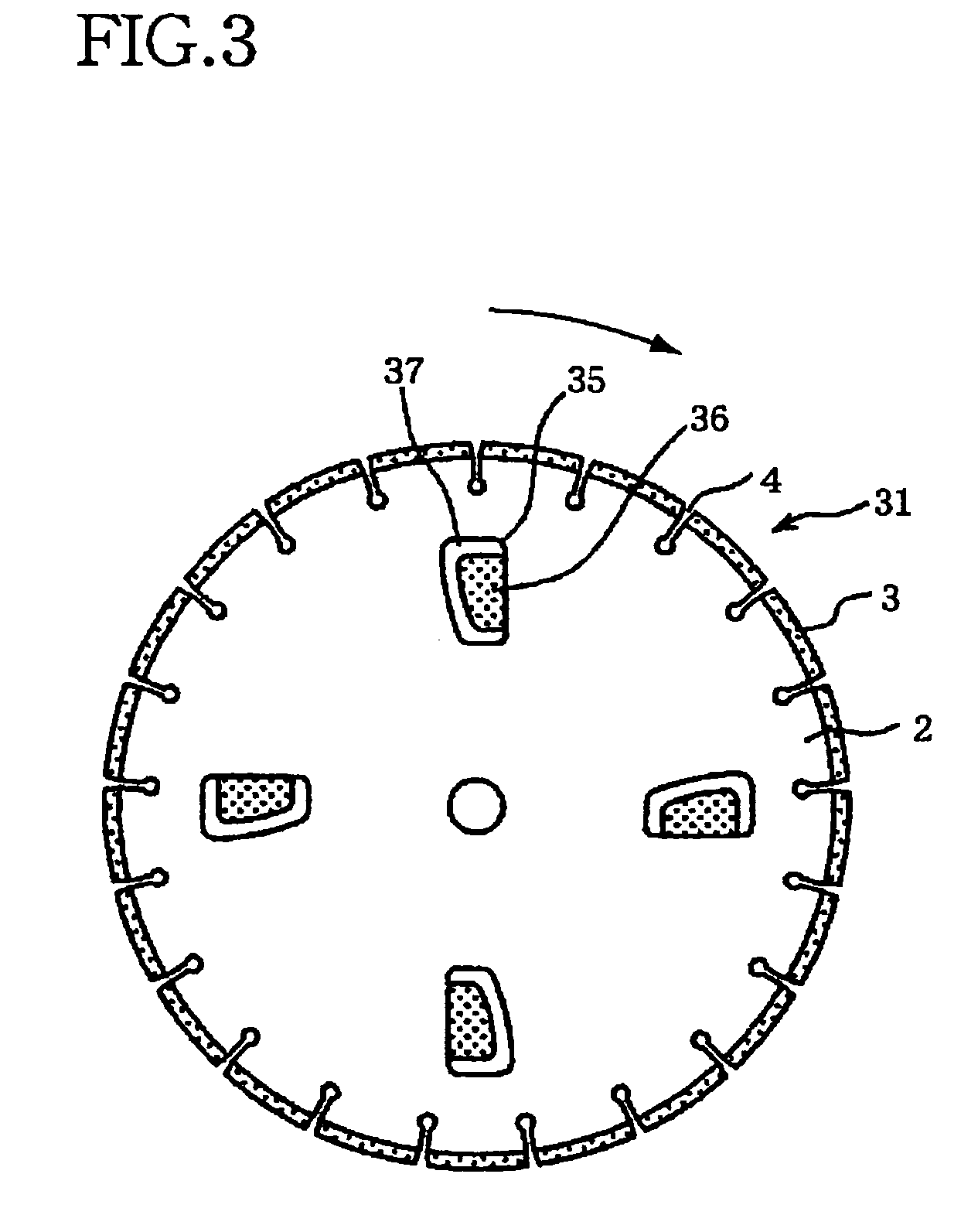Rotary cutting saw with improved heat dissipation performance
a technology of heat dissipation performance and cutting saw, which is applied in the direction of gear teeth, gear teeth, gear manufacturing apparatus, etc., can solve the problems of ineffective prevention of burning, increased risk of cutting chips, etc., to reduce the amount of axial runout of the cutting saw as measured, increase the diameter of the cutting saw, and reduce the effect of the load
- Summary
- Abstract
- Description
- Claims
- Application Information
AI Technical Summary
Benefits of technology
Problems solved by technology
Method used
Image
Examples
first embodiment
[0031]Referring first to FIGS. 1A and 1B, there will be described a rotary cutting saw 1 constructed according to the invention. This rotary cutting saw 1 includes a circle-shaped base disk 2, a plurality of cutting chips 3 as abrasive segments, and a plurality of hard chips 6 as axial-runout restraining members or side-wall runout restraining members. The cutting chips 3 are fixed to an outer circumferential surface of the base disk 2 such that the cutting chips 3 are equally spaced apart from each other in a circumferential direction of the base disk 2. The base disk 2 has a plurality of chip-evacuation slits 4 formed between the cutting chips 3, so as to extend inwardly in a radial direction of the base disk 2 from the outer circumferential surface and also in an axial direction oft the base disk 2 over an entire thickness or axial length of the base disk 2. The base disk 2 has also a plurality of apertures 5 formed therethrough and opening in axially opposite end surfaces thereo...
second embodiment
[0036]FIG. 2 shows another rotary cutting saw 21, which is constructed according to the invention. Like the above-described rotary cutting saw 1 of FIGS. 1A and 1B, this rotary cutting saw 21 has the base disk 2, the plurality of cutting chips 3 attached to the outer circumferential surface of the base disk 2, and the chip-evacuation slits 4 formed between the cutting chips 3. However, this cutting saw 21 is different from the above-described cutting saw 1 in that its base disk 2 has a plurality of radially outside and inside apertures 25a, 25b formed therethrough such that the radially inside apertures 25b are located radially inwardly of the radially outside apertures 25a. It is preferable that the radially outside apertures 25a are equally spaced apart from each other in the circumferential direction of the base disk 2, and that the radially inside apertures 25b are equally spaced apart from each other in the circumferential direction, too. Like each of the apertures 5 of the cut...
third embodiment
[0037]FIG. 3 shows still another rotary cutting saw 31, which is constructed according to the invention. Like the above-described rotary cutting saw 1 of FIGS. 1A and 1B, this rotary cutting saw 31 has the base disk 2, the plurality of cutting chips 3 attached to the outer circumferential surface of the base disk 2, and the chip-evacuation slits 4 formed between the cutting chips 3. However, this cutting saw 31 is different from the above-described cutting saw 1 in that its base disk 2 has, in place of the above-described apertures 5, a plurality of apertures 35 has a width which is gradually changed as viewed in the radial direction of the base disk 2. Specifically described, each of the apertures 35 is provided by an elongated hole which is elongated in the radial direction of the base disk 2, and has a width (as measured in the circumferential direction of the base disk 2) which is reduced as viewed in a direction away from the outer periphery of the base disk 2 toward the axis o...
PUM
| Property | Measurement | Unit |
|---|---|---|
| distance | aaaaa | aaaaa |
| diameter | aaaaa | aaaaa |
| size | aaaaa | aaaaa |
Abstract
Description
Claims
Application Information
 Login to View More
Login to View More - R&D
- Intellectual Property
- Life Sciences
- Materials
- Tech Scout
- Unparalleled Data Quality
- Higher Quality Content
- 60% Fewer Hallucinations
Browse by: Latest US Patents, China's latest patents, Technical Efficacy Thesaurus, Application Domain, Technology Topic, Popular Technical Reports.
© 2025 PatSnap. All rights reserved.Legal|Privacy policy|Modern Slavery Act Transparency Statement|Sitemap|About US| Contact US: help@patsnap.com



